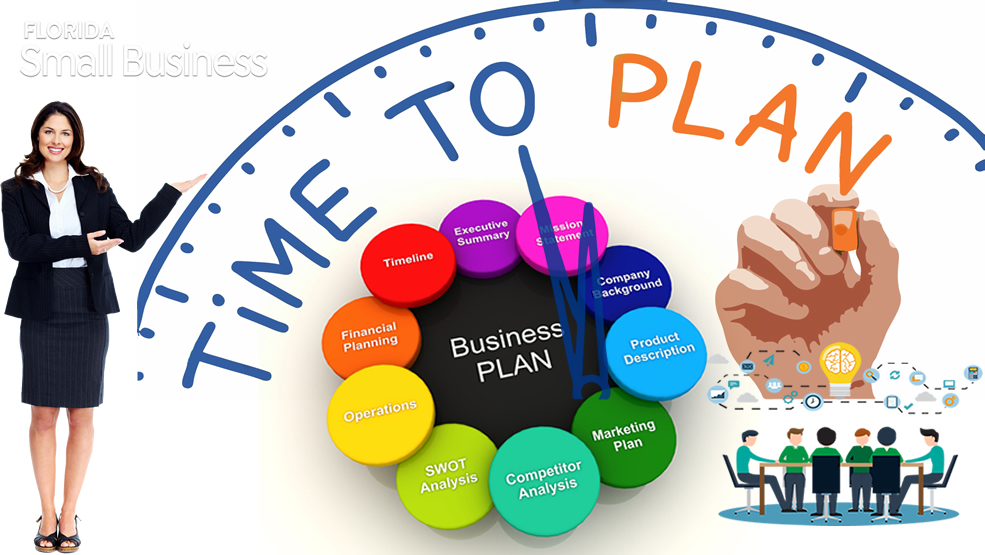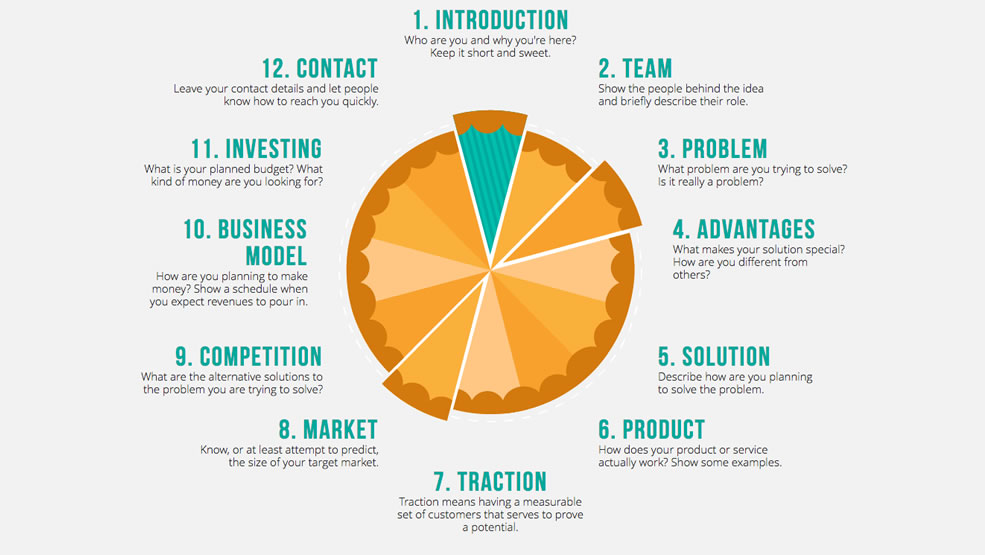As one of the original members of ITE DATACOM, I have seen our business grow from 2 guys in a garage to where we are now: a growing 7-person crew that is rapidly becoming South Florida’s leader in IT. When we first started, we kept track of our work with only email and word docs. Surprisingly, this was just fine in the early days. In order for our business to grow, however, we had to get better!
While we can’t bottle our entire secret sauce to success in a few paragraphs, we hope to give you a small taste of the tools we use that continue to help us to grow sustainably and efficiently. What follows is the first part of our ITE DATACOM IT starter kit to success: business planning, preparing pitches, and introducing lean startup methods. Stayed tuned for future blogs in our Secret Sauce series as we will cover more on business operations, communication, task & project management, information technology (IT), as well as a few extras. My sources come from years of trial and error.
Even though our core specialty is IT, we also help with small to medium sized business consulting. Much of our expertise overlaps into nearly all facets of running a business. Chances are we might know the right tools, services, and people to make you work smarter and grow! Let’s get started.

CRAZY ENOUGH TO START A BUSINESS
So, you want to start a business or grow your current one? Awesome! Sounds like you might need to see a doctor or maybe you’re just a “Delusional Optimist,” according to Nobel laureate Daniel Kahneman. Here are some steps to get the ball rolling.

MAKE A BUSINESS PLAN
This is a step a lot of businesses skip. If you’re the next Tesla and want to put everything down on a napkin, go fund yourself! For the rest of us, I recommend LivePlan cloud-based business planning software. Their templates and questions will get your ideas down on paper from the creating the pitch & strategy to determining financial forecasts.

- The Pitch – Communicate your mission statement, the opportunity, the problem worth solving, your solution, the target market, competitors, and funding needed.
- Sales & Marketing – Determine your sales channels and marketing activities.
- Financial Projections – Calculate your revenue, expenses, and profit.
- Milestones – Lay out your timeline and steps to success!
- Team & Partners – Teamwork makes the dream work! List out who is on your team and the partners that will makes dreams become reality. Of course, we at ITE DATACOM are happy to be your partner and resource for IT.

PITCHING TIME
So now that you have a bulletproof business plan, canvas, or napkin, what’s next? It’s now time to show the world!!! Whether you’re the next Uber pitching to Sequoia Capital to get VC funding or a traditional business looking to present your updated roadmap to your partners, having effective and beautiful pitch deck slides make all the difference.
So which presentation slideshow software is the best? Well… it all depends on your audience. If everyone is suited up like Don Draper from Mad Men, then maybe stick with the more formal Microsoft PowerPoint, favorite of management consultant types. If your crowd looks more like the cast from HBO’s Silicon Valley, then better make it hip and cool with Prezi.

Prezi is cloud-based presentation software so several people can work on the slide desk simultaneously. It also uses a zooming user interface (ZUI), which allows users to zoom in and out of their presentation media and allows users to display and navigate through the information in a 3D-like space. I must mention that Prezi can have a slight learning curve; once you get the hang of it, however, the time invested will pay dividends in truly breathtaking presentations. There are a ton of templates and themes to get your message across.
Pitch Deck 101 – Some dos and don’ts … The key here is to be relevant and entertaining, but concise.
DO:
- Tell an exciting story and make an emotional connection.
- One slide = one idea. Keep your audience’s focus.
- Start with a bang. You never get a second chance to make a first impression. The first 2-3 minutes is everything.
- Introduce your team. Presenting the team behind the idea is more crucial in some ways than the idea; the audience will believe in your vision if they believe in your team. Demonstrate the relevant competencies and accomplishments of each person.
- Keep a uniform look and feel across all slides (same font, size, color and capitalization format).
- Know the numbers inside and out. You must be the world’s foremost expert in your metrics and analysis for your own business.
DON’T:
- Just say no to too many bullet points. (Don’t be like me!)
- Don’t make it too long. Average attention span is 10 slides.
- Don’t read slides word for word. Eye contact with your crowd is priceless.
- Don’t have too much text. The slides should act more as a visual queue containing a few words with rich images.
- Don’t be unprepared. Anticipate and practice answering all questions beforehand.
- Don’t use small fonts. Use 32- to 44-point for titles and no smaller than 28-point for the text or bulleted items.
LEAN CUISINE
If you have planner personality, then you probably will love to sit down take the time to create business plans and presentations. If you’re a normal person, you want to just get out there right away and try your hand in business. Well…there’s good news! Shortcuts in life exist.

The essentials of the iterative approach to business are all covered in Eric Ries’ book, The Lean Startup. Although Eric Ries’s Lean Startup methodology is considered religion in the startup world, the entrepreneurial lessons in his New York Times bestseller can also be applied as an intrapreneurial approach to any business. One of the main lessons is that innovation in your business can be fostered by creating small experiments to prove that your ideas can be successful before putting forth significant amounts of time and money.
THE REAL MVP
MVP! MVP! MVP! – I know what you’re thinking…and NO, this is not about becoming a Most Valuable Player like Tom Brady. MVP = Minimal Viable Product. This is the core component of the Lean Startup philosophy and the “build-measure-learn-feedback loop.”

The basic idea is that you want to build ideas, products, services, and programs as fast as possible and as bare-bones as possible. This allows you to learn quickly without heavy investments of time and money up front.
Once you have your MVP developed, you can begin to measure performance through user feedback and tinker your way to improvement. The main reason this is great is because you’re not spending all kinds of time and effort to build something you haven’t proved that people will like. One of the best examples of an MVP was when Dropbox founder Drew Houston used a short video as his MVP to gauge interest before even writing a single line of code for the software. I personally challenge you to try this at home, or in your business, of course. We love to hear your stories of success and failure… since we all know failure can be fertilizer for later success.
START IT UP!
Don’t listen to us. Yup, I said it. Instead, listen to Paul Graham, Peter Thiel, Marc Andreessen, Ron Conway, Ben Horowitz, Marissa Mayer, and other Silicon Valley heavyweights. Of course, when it comes to IT, you should definitely listen to us! However, when it comes to understanding How to Start a Startup, the smart folks at Y Combinator and Stanford have created the perfect class to walk you through all the main steps of kicking off your venture: #1 – Idea, #2 – Product, #3 – Team, and #4 – Execution.

This free online video course is also available on iTunes in audio form. There are also plenty of lessons for traditional businesses as well.
THINK LIKE A STARTUP… EVEN WHEN YOU AREN’T
We’re deeply embroiled in the startup scene by the mere virtue of operating a tech company in South Florida, so it has rubbed off on us more than a bit. We have learned that to stay competitive in a business environment like South Florida, we have to get better every day and execute ideas well. ITE DATACOM implements a lot of what we have learned from startups, like the methods mentioned above, and we truly believe that nearly any business can benefit from thinking like a startup.
Being a small business that acts like a startup means that we’re well equipped to adapt to the ever-changing landscape of information technology. Our success is a direct result of moving quickly, learning continuously, and staying relevant.
While South Florida seems to be all startups peddling the latest hot app, this area is also a prime spot to run a small business, which is why we were inspired to share what we have learned over the years. Stay tuned for more advice on topics like spreading the word about your business, building a good company culture, and more.
Of course, this is just information and should not be taken as professional advice, we are just sharing our opinion and strongly suggest you seek professional help with your start up. We are IT Consultants, and our work revolves more around helping you, our customer, grow and get your big ideas off the ground. We handle the mess of ugly cables in your server room and keep your data secure so you can design groundbreaking products. Let us help you do what you do best.

Call or email us today. Info@Itedatacom.us 305 490 8331.


Add a Comment